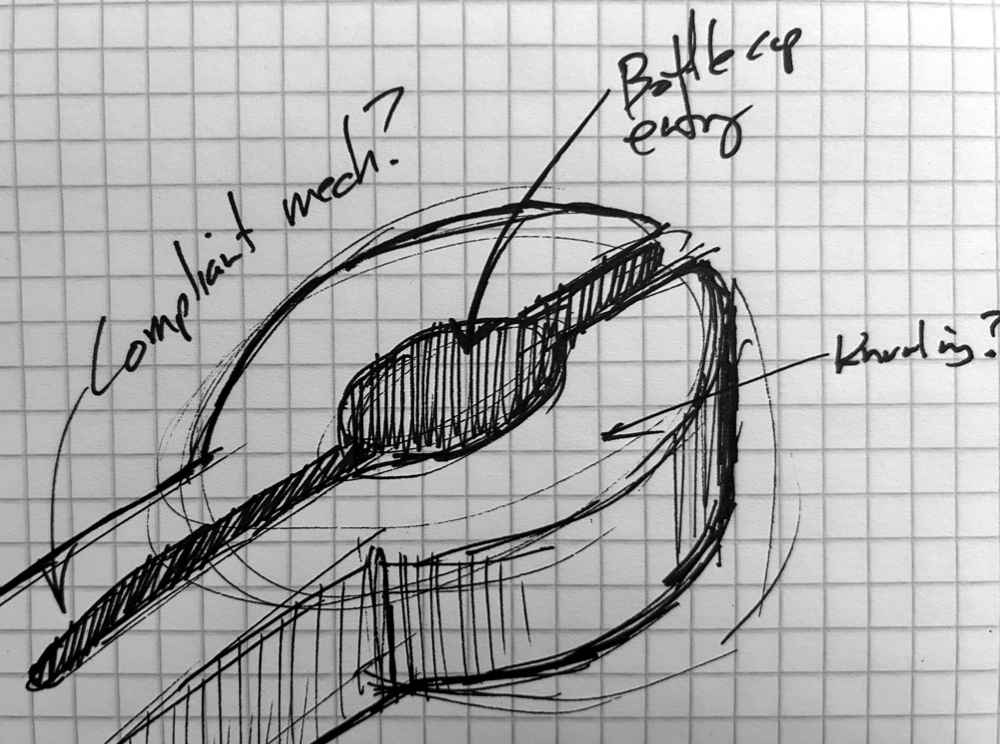Designed for you: Why products require research, iteration, and a bet.
Creating a product that is truly useful and usable is a process that begins with listening and ends with listening. Here’s a peek behind the curtain at how Useful & Usable Workshop™ brings physical products to life.
It Starts with Listening and Observing
At Useful & Usable Workshop, we are lucky to have some of the world’s most fabulous research participants and product testers. They range in age from young adults to 94 years old. They have kindly offered insights and requests that informed our key product features.
One common frustration they shared was the difficulty of opening eye drop bottles. This is a frequent annoyance. People may delay use or struggle to find a workarounds. One person even fashioned a solution with a pair of pliers, which, while effective at opening the bottle, risked crushing the expensive product.
The Indispensable Power of Touch
Ideas on a screen or detailed specs are essential, but they lack a certain quality. There’s a moment of truth that only happens when an idea takes physical form. That’s why prototyping – creating something real, something you can hold, turn over in your hands, and interact with – is non-negotiable.
Think about it: Does the weight feel balanced and reassuring? Is the texture welcoming or jarring? Does your hand naturally find the controls? Is the interaction intuitive, almost effortless? Can you feel the quality and care that went into it? This physical feedback is raw, honest, and incredibly revealing. It’s where theory meets reality, right in the palm of your hand.
Several iterations of the Eye Drop Bottle Opener Set, designed by Useful & Usable Workshop
Embracing the Inevitability of Being Wrong
Our first ideas, even those born from deep research, are rarely perfect. And that's okay. In fact, it's essential. Placing that first prototype into someone's hands is often a wonderfully humbling experience. Suddenly, what seemed brilliant on paper feels awkward. A finger-hold is slightly out of reach. A material doesn't convey the intended feeling of durability. This isn't failure; it's learning. It’s the data you can’t get from a survey. Seeing someone struggle slightly, or hesitate, or even light up unexpectedly at a feature, provides insights far richer than any assumption. It pushes us to refine, rethink, and simplify.
New product failure rates typically fall within the 30% to 49% range. (1)
This feedback is the fuel for iteration. Each adjustment, each tweak to the form, material, or function, is guided by those real interactions. We smooth the rough edges and ensure the final object feels not just functional, but right. It’s a meticulous process of refinement, striving for that blend of elegance and usability. It’s about crafting an experience, ensuring the final product feels considered and genuinely enhances a moment in your day.
Eye Drop Bottle Opener Set, designed by Useful & Usable Workshop
Making an Informed Bet
Eventually, after cycles of prototyping, testing, and refining, a design emerges that resonates with users. It’s never a guarantee, but it's an informed bet – a carefully considered belief that this creation will elegantly solve a real problem.
But launching a product isn't the end of a story. It's more like continuing a conversation. How people use a product in their diverse lives continues to teach us. Needs evolve, preferences change, and new possibilities emerge. We remain committed to listening and observing, ready to refine and enhance the experience, ensuring our creations continue to feel relevant, caring, and genuinely useful and usable.
References:
(1) https://www.researchgate.net/publication/359923834_Success_and_failure_rates_of_new_food_and_non-food_products_introduced_on_the_market





